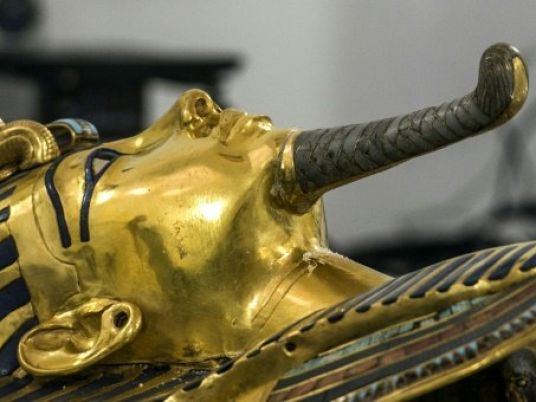
Infra-red scanning of King Tutankhamun's tomb could support a British archeologist's theory that Queen Nefertiti — or another ancient Egyptian royal — is also buried there, Egypt's antiquities minister said Thursday.
Archaeologists have never discovered the mummy of the legendary beauty, but renowned British archaeologist Nicholas Reeves said in a recent study that her tomb could be in a secret chamber adjoining Tutankhamun's tomb in the Valley of Kings at Luxor, southern Egypt.
Egypt in October launched a study known as "Scan Pyramids" bringing together Egyptian, French, Canadian and Japanese experts to unravel the "secrets" of the Giza pyramids outside Cairo.
The project aims to discover any hidden chambers inside them and to understand how the monuments were built, as well as to scan Tutankhamun's tomb.
"The mission has started its first experiment using infra-red thermography to map out the temperature of the walls of Tutankhamun's tomb," Minister of Antiquities Mamduh al-Damati said.
"The preliminary analyses have shown differences in the temperatures registered on different parts of the northern wall" of the tomb, he said.
Additional experiments are to be conducted to better determine which part of the wall shows a different temperature, he added.
Damati and Reeves, who in September announced they would use infra-red scanning to reveal a secret chamber inside the king's tomb, differ on whose mummy they expect to find there.
According to Reeves, professor of archeology at the University of Arizona, Tutankhamun, who died unexpectedly, was buried hurriedly in an underground chamber probably not intended for him.
His death would have forced priests to reopen Nefertiti's tomb 10 years after her death because the young pharaoh's own mausoleum had not yet been built.
But Damati believes that such a chamber, if found adjoining Tutankhamun's tomb, may contain Kiya, a wife of the pharaoh Akhenaten.
Damati hopes scanning the walls of Tutankhamun's tomb will reveal "the discovery of the century".
Nefertiti played a major political and religious role in the 14th century BC.
She actively supported her husband Akhenaten — Tutankhamun's father — who temporarily converted ancient Egypt to monotheism by imposing the single cult of sun god Aton.
Tutankhamun died aged 19 in 1324 BC after just nine years on the throne.
His final resting place was discovered by another British Egyptologist, Howard Carter, in 1922.

